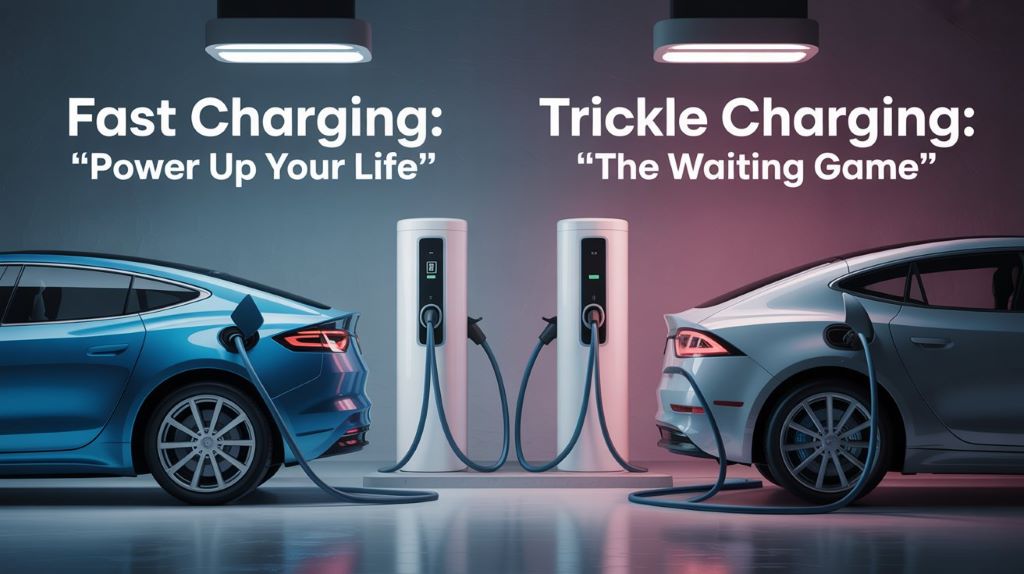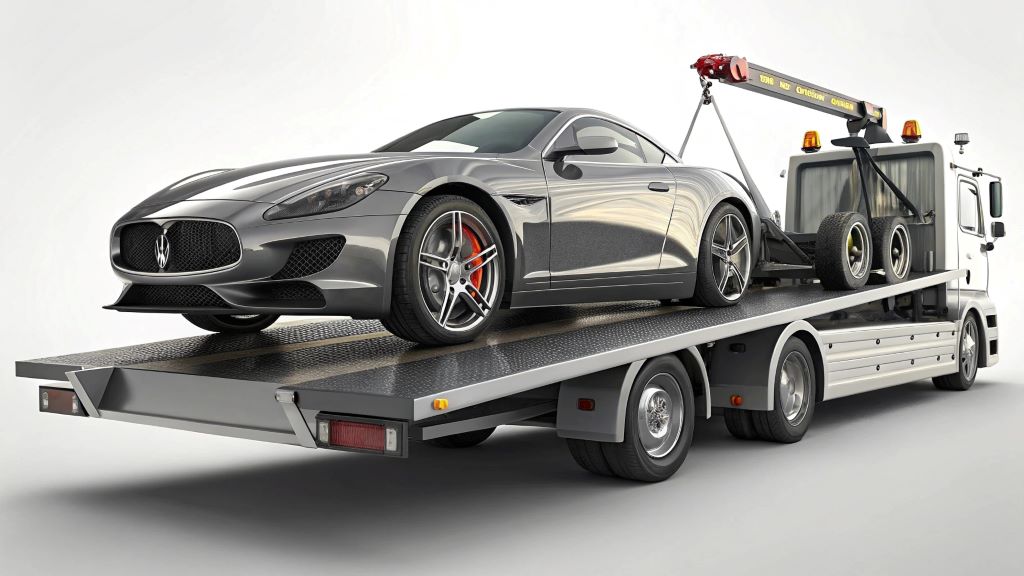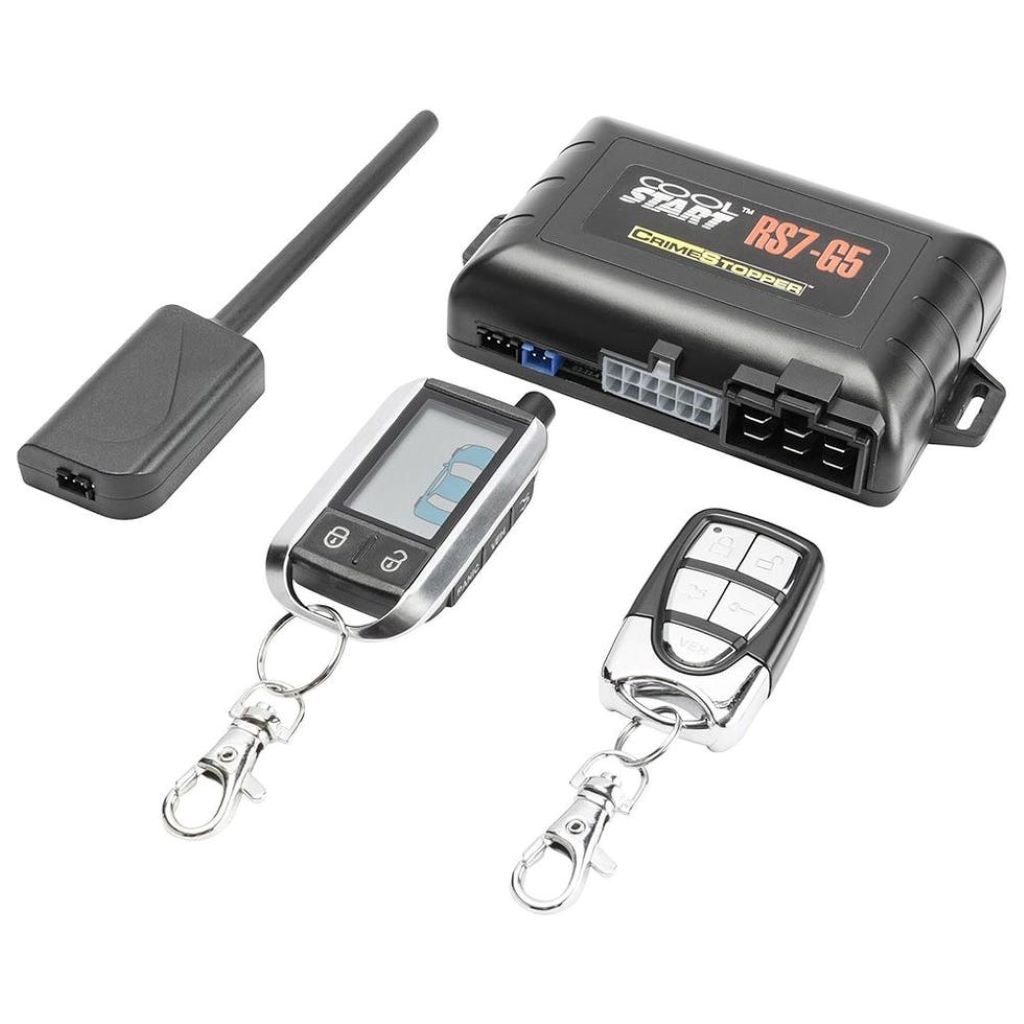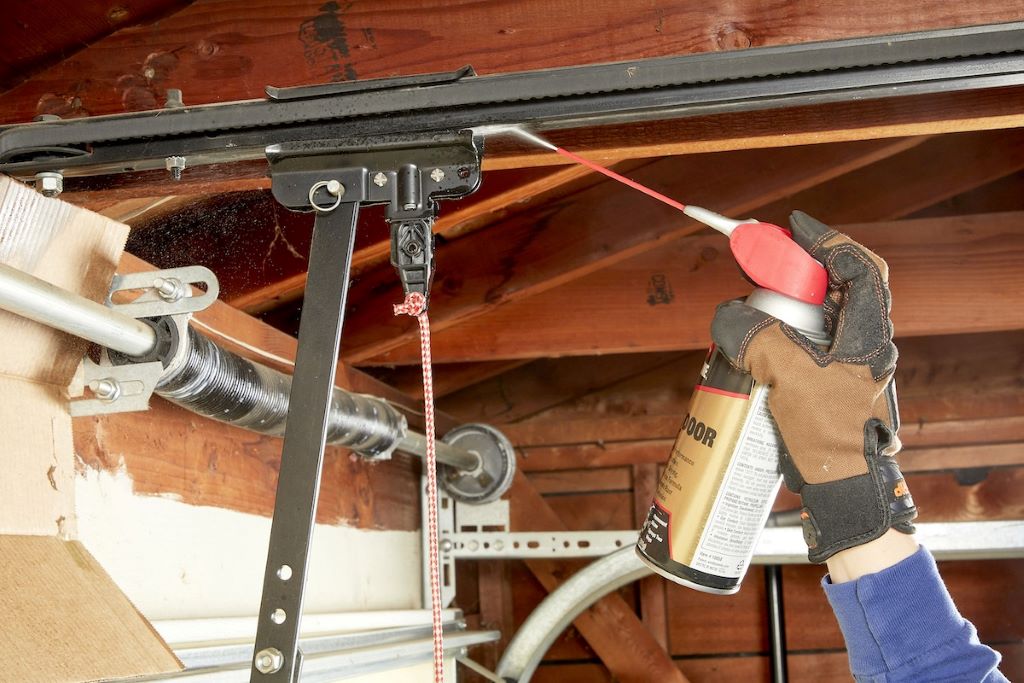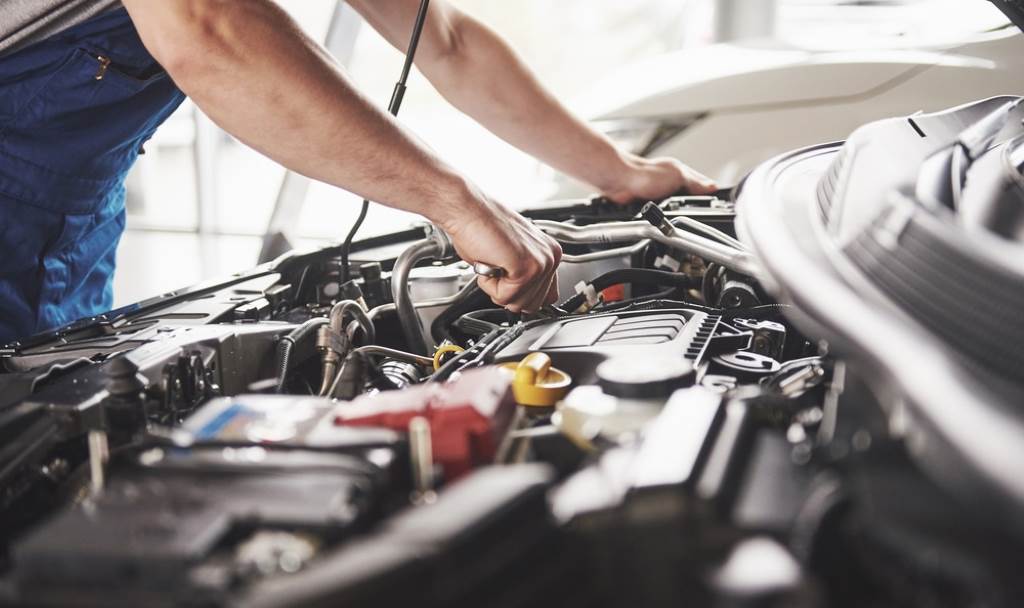Introduction: Understanding Fast Charging vs Trickle Charging EV
Electric vehicles (EVs) are transforming the automotive landscape, offering eco-friendly alternatives to traditional gas-powered cars. As EV adoption soars with over 40 million EVs expected on U.S. roads by 2030 according to the National Renewable Energy Laboratory one critical decision every EV owner faces is how to charge their vehicle. The debate of fast charging vs trickle charging EV is more than just a matter of speed; it’s about balancing convenience, battery health, cost, and sustainability. Fast charging promises quick top-ups, often delivering 80% charge in under 30 minutes, while trickle charging takes a slower, gentler approach, sometimes requiring 40-50 hours for a full charge. This article dives deep into both methods, exploring their mechanics, impacts, and strategic uses, so you can make informed decisions for your EV lifestyle. With insights from industry experts, real-world data, and practical solutions, we’ll uncover which charging method reigns supreme or if a hybrid approach is the future.
What Is EV Charging? Breaking Down the Basics
EV charging involves transferring electrical energy from a power source to an electric vehicle’s battery. Unlike refueling a gas car, charging an EV varies by speed, power level, and infrastructure. The three primary charging levels Level 1 (trickle), Level 2 (fast AC), and Level 3 (DC fast charging) define how quickly energy flows to the battery.
Trickle Charging (Level 1): The Slow and Steady Approach
Trickle charging uses a standard 120-volt household outlet, delivering 1.4-2.4 kW of power. It’s the slowest method, adding about 3-6 miles of range per hour. For a 60 kWh battery, like that in a Nissan Leaf, a full charge could take 30-40 hours. Most EVs come with a Level 1 charger, making it accessible but impractical for daily high-mileage drivers. According to the U.S. Department of Transportation, Level 1 is ideal for plug-in hybrid EVs (PHEVs) or drivers with short commutes under 40 miles daily. Its low power draw minimizes stress on the grid, and it requires no special installation, appealing to renters or those with limited budgets.
Fast Charging (Level 2 and DCFC): The Need for Speed
Level 2 charging, using a 240-volt outlet, delivers 7.2-19.2 kW, adding 12-44 miles of range per hour. A full charge for a Tesla Model 3 (50 kWh battery) takes 4-8 hours, making it suitable for home or workplace charging. DC fast charging (Level 3), with power outputs of 50-350 kW, can charge a battery to 80% in 20-60 minutes, perfect for road trips or urban charging stations. For example, Electrify America’s 350 kW chargers can add 200-500 miles of range per hour to compatible EVs like the Porsche Taycan. However, not all EVs can handle ultra-high power, and charging slows above 80% to protect the battery.
Logic and Opinion: Trickle charging’s simplicity is unmatched, but its glacial pace frustrates drivers with longer commutes. Fast charging’s speed is a game-changer, yet its reliance on specialized infrastructure limits accessibility. A 2023 study by the Southern Alliance for Clean Energy emphasizes that 85% of EV charging happens at home, suggesting Level 2 as a practical middle ground for most.
The Science Behind Charging: How It Affects Your EV Battery
EV batteries, typically lithium-ion, are sensitive to charging methods. The fast charging vs trickle charging EV debate hinges on how each impacts battery health, measured by state of health (SOH) or capacity retention over time.
Trickle Charging: Gentle on Batteries
Trickle charging’s low current reduces heat and stress on battery cells. Heat is a primary cause of lithium-ion degradation, accelerating chemical reactions that reduce capacity. A 2021 study by Geotab found that Level 1 charging results in 0.9% annual degradation, compared to 1% for Level 2. For EVs like the Chevrolet Bolt, this translates to retaining 90% capacity after 8 years of daily trickle charging. The slow charge allows ions to stabilize, minimizing lithium plating a phenomenon where metallic lithium deposits reduce efficiency. Trickle charging is ideal for overnight use or when the battery is deeply discharged below 3.0V, as it employs a constant-current, constant-voltage (CC-CV) method to safely restore capacity.
Fast Charging: Speed at a Cost?
Fast charging, especially DCFC, pushes high voltage and current, generating significant heat. Laboratory studies suggest frequent DCFC can increase degradation by 0.1-0.4% annually compared to Level 2. A 2019 Idaho National Laboratory test on 2012 Nissan Leafs showed 27% capacity loss after 50,000 miles with exclusive Level 3 charging, versus 23% for Level 2. However, real-world data from Recurrent’s 2024 study of 13,000 Teslas found no significant range loss between frequent (70%+) and infrequent (30% or less) fast chargers over 5-6 years. Modern EVs have robust Battery Management Systems (BMS) that regulate temperature, voltage, and charge rates, mitigating damage. For instance, Tesla’s BMS caps charging at 80% on Superchargers to prevent overcharging.
Logic and Opinion: The fear of fast charging’s impact is partly overblown due to advancements in BMS technology. However, in hot climates above 90°F, frequent DCFC can exacerbate degradation, as noted by Geotab. Trickle charging’s battery-friendly nature makes it a safer long-term choice, but its impracticality for daily use pushes most drivers toward Level 2 or occasional DCFC. Experts like Matti Dinkelmeyer from Delta Electronics argue that a balanced approach using Level 2 primarily with DCFC for trips optimizes battery life and convenience.
Cost Analysis: What’s Cheaper in the Long Run?
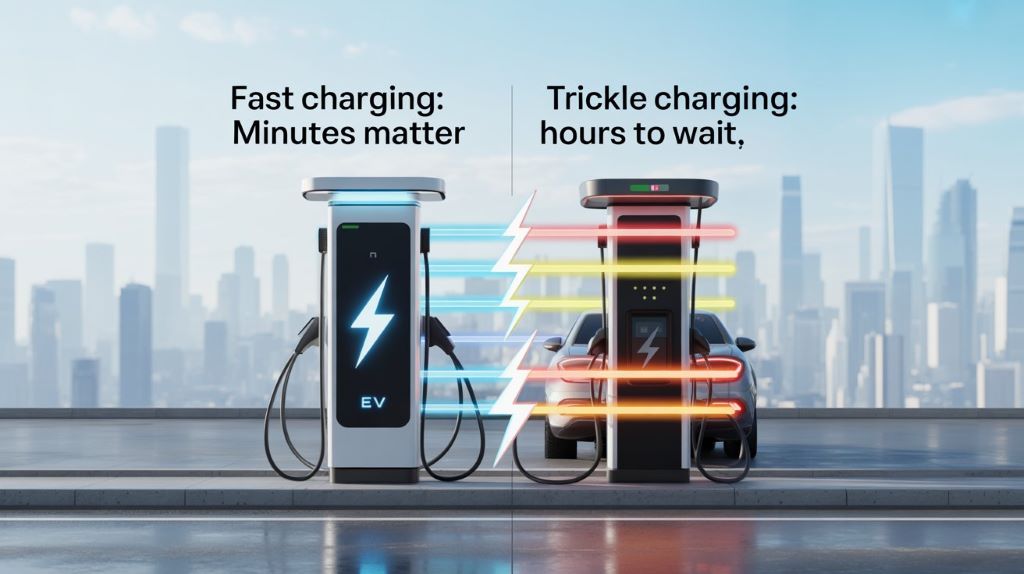
Charging costs depend on electricity rates, charger type, and usage patterns. Let’s break down the economics of fast charging vs trickle charging EV.
Trickle Charging: Low Upfront, Steady Savings
Level 1 charging requires no installation, using existing outlets. At the U.S. average residential rate of 16 cents per kWh, charging a 60 kWh battery costs $9.60. For a driver covering 12,000 miles annually at 3 miles per kWh, annual costs are about $640. Trickle charging’s low power draw aligns with off-peak rates (often 10-12 cents/kWh overnight), further reducing costs. However, the time investment is significant, potentially requiring 2-3 days for a full charge, which may not suit high-mileage drivers.
Fast Charging: Higher Costs, Greater Convenience
Level 2 home chargers cost $600-$1,000 plus $500-$2,000 for installation, but they reduce charging time significantly. Using the same 60 kWh battery at 16 cents/kWh, a full charge costs $9.60, identical to Level 1. Annual costs for 12,000 miles remain around $640, assuming home charging. Public DCFC, however, is pricier, often 30-50 cents/kWh or $0.50-$1.00 per minute. Charging 60 kWh at 40 cents/kWh costs $24 per session, or $1,600 annually if used exclusively. A 2024 Zap Map report notes that public fast chargers are shrinking in free availability, increasing reliance on paid stations.
Logic and Opinion: Trickle charging wins for budget-conscious drivers with short commutes, especially renters avoiding installation costs. Fast charging’s upfront costs for Level 2 are offset by convenience, while DCFC’s high rates make it a last resort. The Southern Alliance for Clean Energy highlights that residential charging saves 50-70% compared to gas, making Level 2 the sweet spot for most.
Infrastructure and Accessibility: Where Can You Charge?
The availability of charging infrastructure shapes the fast charging vs trickle charging EV decision.
Trickle Charging: Universal but Limited
Level 1 chargers work with any 120V outlet, making them ubiquitous. HoweverTheir slow speed limits practicality for public or workplace settings. A 2023 LinkedIn article by Elizabeth Perry noted that Level 1 is viable for apartment dwellers or those without off-street parking, using creative solutions like ADA-compliant cord covers. Yet, for drivers needing 100+ miles daily, trickle charging alone is insufficient.
Fast Charging: Growing but Uneven
Level 2 chargers are common in homes, workplaces, and public spaces like malls, with 7 kW units adding 40 km/hour. DCFC stations, numbering 15,109 in the UK per Zap Map, are concentrated along highways and urban centers. The U.S. has similar trends, with Electrify America and Tesla Superchargers leading. However, rural areas lag, and non-Tesla EVs face compatibility issues with Tesla’s proprietary connectors. The FHWA’s 2023 standards aim to unify connectors and improve reliability, but gaps remain.
Logic and Opinion: Trickle charging’s universal access is a boon for low-mileage drivers, but fast charging’s infrastructure is critical for mass EV adoption. The NREL predicts a need for 28 million charging ports by 2030, emphasizing Level 2’s role in residential and public settings. Rural expansion and standardized connectors are urgent needs to make fast charging equitable.
Environmental Impact: Which Is Greener?
EVs reduce emissions, but charging methods influence their carbon footprint.
Trickle Charging: Efficient but Grid-Dependent
Level 1’s low power draw aligns with off-peak grid usage, often powered by renewables like wind or hydro. A 2021 study by Comillas Pontifical University noted that controlled trickle charging reduces grid strain and power losses. However, in coal-heavy grids, slow charging’s long duration can offset efficiency gains.
Fast Charging: High Demand, Mixed Impact
DCFC’s high power demand can stress grids, especially during peak hours. A 350 kW charger pulling 10x the power of a Level 1 unit may rely on fossil fuels if renewables aren’t available. Yet, fast chargers enable long-distance EV travel, reducing reliance on gas vehicles. Innovations like bidirectional charging (V2G) could allow fast-charged EVs to return power to the grid, enhancing sustainability.
Logic and Opinion: Trickle charging’s efficiency is greener in renewable-heavy grids, but fast charging’s role in enabling EV adoption outweighs its drawbacks. Pairing DCFC with solar or wind-powered stations, as piloted by Fortescue in 2024, could tip the scales.
Practical Solutions: How to Choose the Right Charging Strategy
- Assess Your Driving Habits: If you drive under 40 miles daily, Level 1 or a 7 kW Level 2 charger suffices. For 100+ miles, invest in Level 2 and use DCFC for trips.
- Balance Battery Health: Use trickle or Level 2 for daily charging, reserving DCFC for necessity. Avoid fast charging below 10% or above 80% SOC to minimize stress.
- Leverage Off-Peak Rates: Schedule Level 1 or 2 charging overnight to save costs and reduce grid impact.
- Plan for Infrastructure: Install a Level 2 charger at home if possible. For apartments, explore workplace or public Level 2 options.
- Stay Informed: Use apps like Mercedes me Charge or PlugShare to locate reliable DCFC stations and monitor costs.
Popular FAQs and Answers
Q: Does fast charging really damage my EV battery?
A: Occasional fast charging has minimal impact, thanks to modern BMS. Recurrent’s 2024 study showed no significant degradation in Teslas fast-charged 70% of the time. Limit frequent DCFC in extreme temperatures to preserve battery life.
Q: Is trickle charging cheaper than fast charging?
A: Yes, for home charging, Level 1 and Level 2 cost the same per kWh (e.g., $9.60 for 60 kWh at 16 cents/kWh). Public DCFC can cost 2-3x more at 30-50 cents/kWh.
Q: Can I rely solely on trickle charging?
A: Only for short commutes under 40 miles daily. Level 1’s 3-6 miles/hour is too slow for high-mileage drivers.
Q: How do I know if my EV supports fast charging?
A: Check your EV’s specs for onboard charger rating (kW) and DCFC compatibility (e.g., CCS, CHAdeMO, or Tesla). For example, the Porsche Taycan supports 320 kW, while the Nissan Ariya maxes at 130 kW.
Conclusion: Striking the Perfect Balance
The fast charging vs trickle charging EV debate isn’t about choosing one over the other it’s about strategic integration. Trickle charging excels for low-mileage drivers, preserving battery health and minimizing costs with universal access. Fast charging, particularly Level 2 and DCFC, empowers longer trips and daily convenience, supported by growing infrastructure. Data shows Level 2 as the most practical for most, balancing speed, cost, and battery longevity, while occasional DCFC use is safe with modern BMS. As EV adoption accelerates, innovations like V2G, wireless charging, and renewable-powered stations will reshape the landscape. For now, assess your needs, invest in a Level 2 charger if feasible, and use trickle and DCFC judiciously. Your EV’s performance, wallet, and the planet will thank you.
Read More:
Blazer vs Trailblazer: Navigating the SUV Landscape

